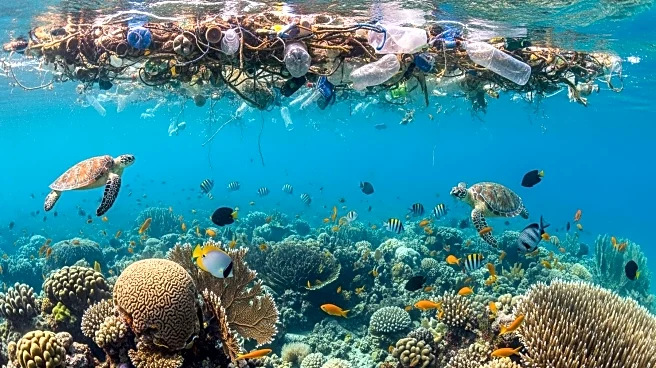What is the story about?
What's Happening?
The American Chemical Society (ACS) has reported the discovery of toxic levels of per- and polyfluoroalkyl substances (PFAS) in sea foam along North Carolina beaches. PFAS are chemicals that degrade slowly and are often found in the environment, including water sources. The ACS study found that PFAS concentrations in sea foam can be thousands of times higher than in surrounding seawater. The Clean Cape Fear community group initially collected samples, which led to an expanded investigation by ACS across 13 locations along the Cape Fear River and Atlantic coastline. The study detected 35 individual PFAS, with some samples showing levels exceeding one million parts-per-trillion.
Why It's Important?
PFAS are classified as Group 1 carcinogens and pose significant health risks due to their persistence in the environment. The discovery of high concentrations in sea foam raises concerns about potential exposure risks to humans and ecosystems. Monitoring and addressing PFAS contamination is crucial to prevent these chemicals from entering drinking water supplies, which could have widespread health implications. The study highlights the need for further research into the transfer of PFAS between water sources and the development of effective treatment methods to reduce exposure.
What's Next?
The ACS study calls for continued monitoring of coastal environments to assess the risks posed by PFAS contamination. Further research is needed to understand the transfer mechanisms of PFAS into sea foam and their impact on human health and ecosystems. The findings may prompt regulatory agencies to implement stricter controls on PFAS discharges and enhance water treatment processes to mitigate contamination.
Beyond the Headlines
The presence of PFAS in sea foam underscores the broader issue of chemical pollution in marine environments. This discovery may lead to increased scrutiny of industrial practices that contribute to PFAS contamination and drive policy changes aimed at reducing environmental and health risks associated with these chemicals.
AI Generated Content
Do you find this article useful?
















